The Coal Mines Subcommittee focuses on supporting the identification and deployment of practical and cost-effective methane mitigation technologies and practices to reduce or eliminate emissions from coal mines. This is achieved by encouraging collaboration among Partner Countries, Subcommittee members, and Project Network members to build capacity, develop strategies and markets, and remove technical and non-technical barriers to methane mitigation project development. Ultimately, such collaboration can increase environmental quality, improve operational efficiency, and strengthen the economy via the additional methane brought to market.
Manoj Kumar, Co-Chair
Central Mine Planning & Design Institute Ltd (CMPDI)
India
Volha Roshchanka, Co-Chair
U.S. Environmental Protection Agency (EPA)
United States
Liu Wenge, Co-Chair
China Coal Information Institute (CCII)
China
Representatives from 22 countries participate in the Coal Mines Subcommittee.
Hundreds of Project Network members support methane abatement projects in the coal sector.
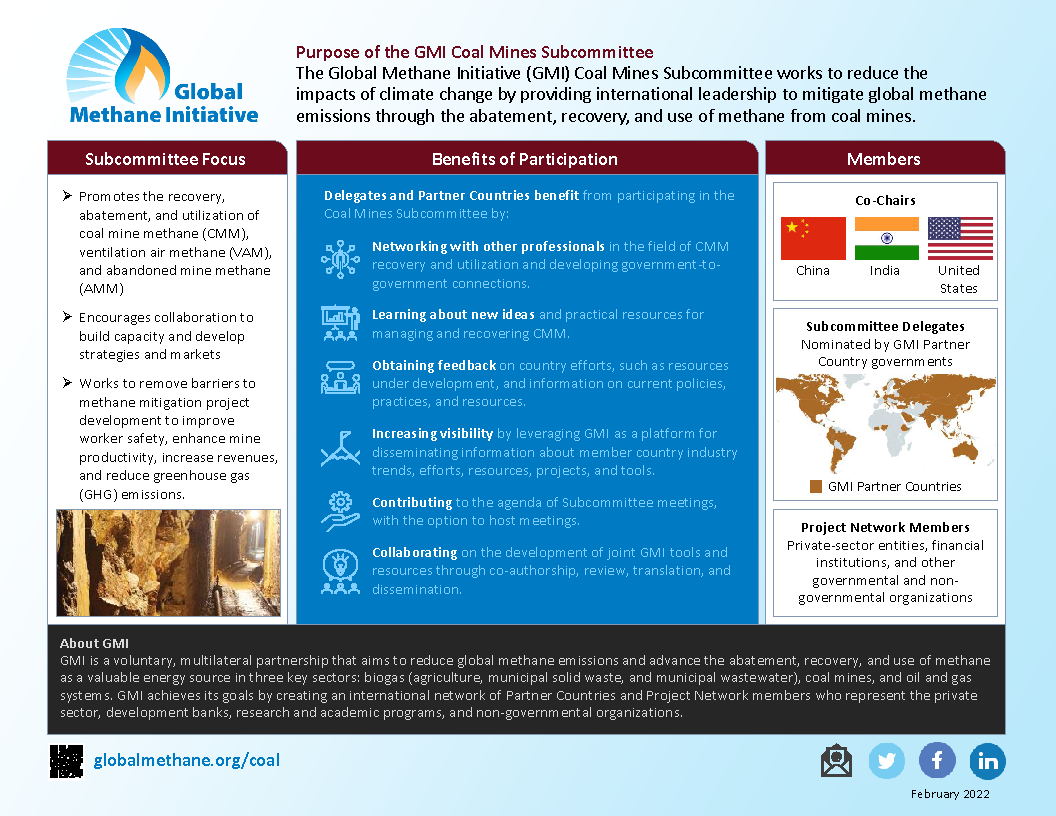
Learn how you can showcase your efforts to reduce methane emissions in the coal sector through the Global Methane Challenge.
Do you know about a potential coal mine methane mitigation opportunity?
Would you like to share your expertise in this sector?
Use the contact us form to submit information about your potential opportunity or just let us know about your expertise.
Would you like to recommend a resource?
Click the button below to recommend a resource that you would like to see featured on the GMI website. The Secretariat and members of the Coal Mines Subcommittee will review your recommendation.
Would you like to receive updates?
Sign up on the GMI mailing list to receive communications from GMI by email. You can select your topics of interest.
Check out these featured resources. For a complete list of available coal resources, including technical documents, presentations, and tools, please visit the resources page.
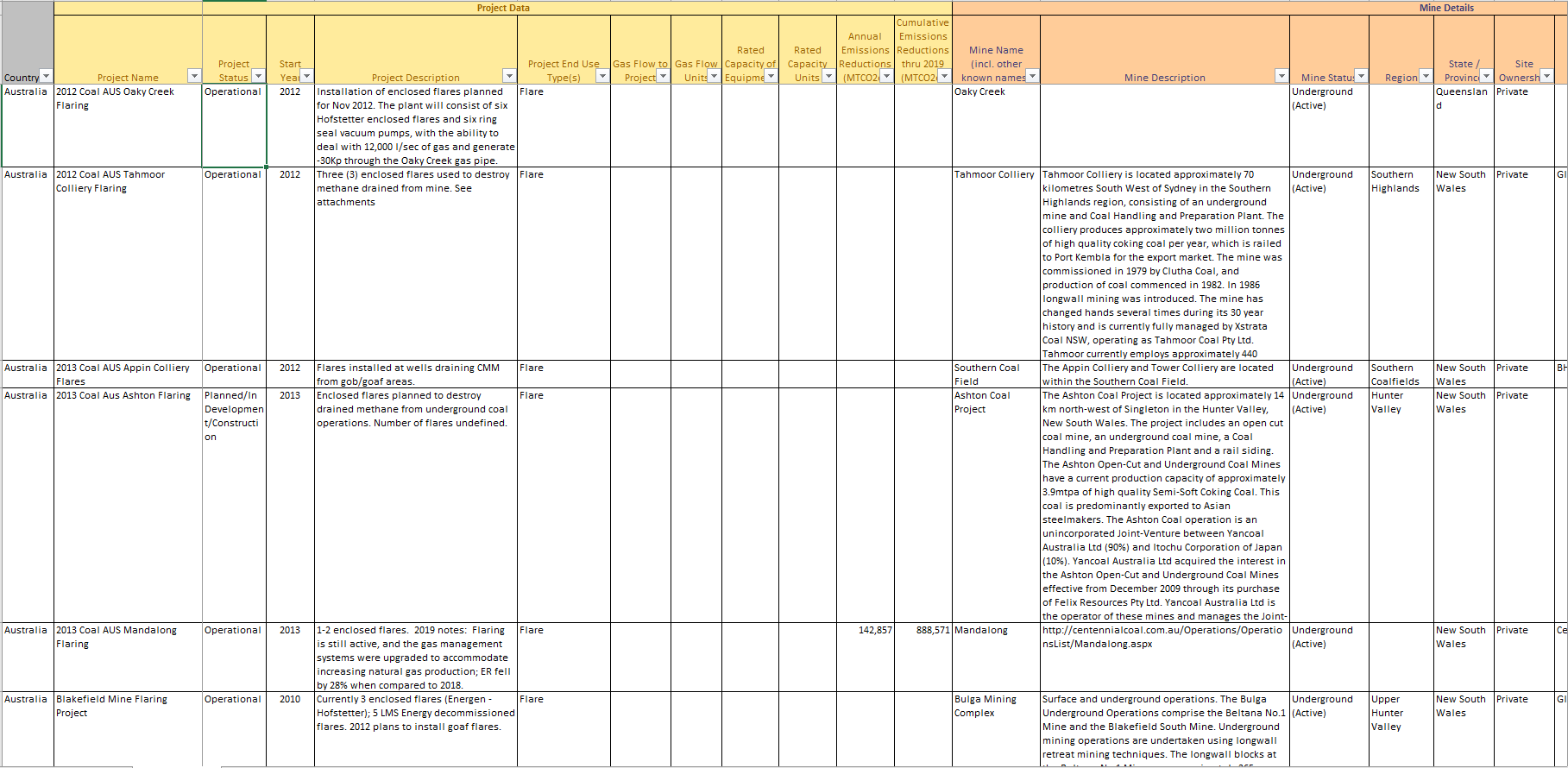
This Excel document contains information on over two hundred coal mine methane recovery and utilization projects operating, in development, or planned around the world in both Global Methane Initiative partner and non-partner countries.
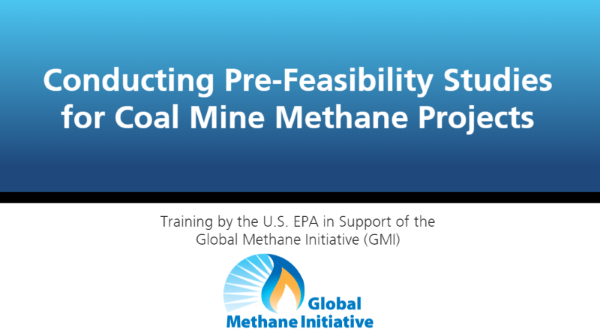
The U.S. EPA is developing this training course in support of the GMI and in conjunction with the United Nations Economic Commission for Europe (UNECE). This course introduces principles for assessing the potential of developing projects to capture and/or use Coal Mine Methane (CMM). The introduced general approach should be underpinned by mine-specific data and analyses, allowing the principles to be tailored to the unique conditions at each mine. Ideally, such an assessment will lead to project development and implementation.
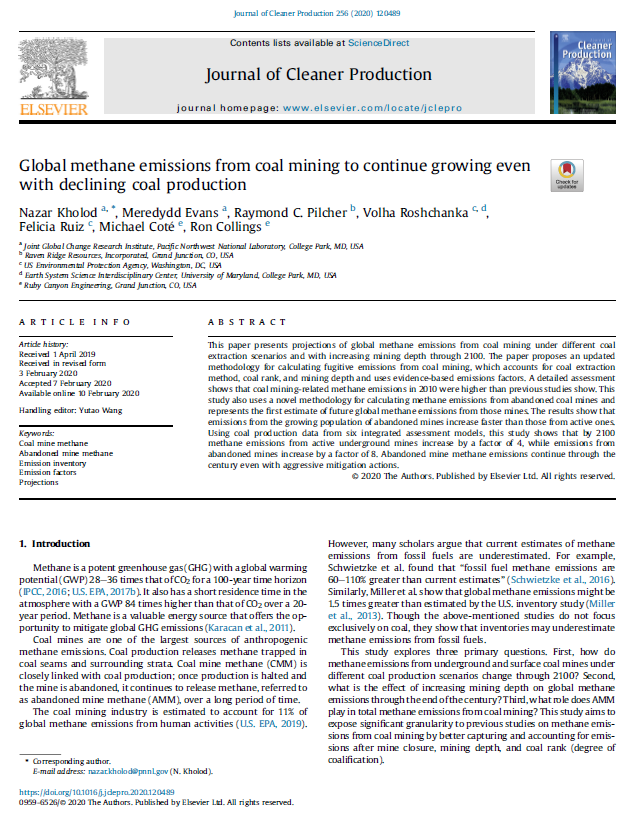
Coal mines are one of the largest sources of anthropogenic methane emissions. As the world produces more coal, coal mines get deeper every year, and methane emissions grow with increasing mining depth. Mine operators also abandon old coal mines, which still emit methane into the atmosphere. The U.S. EPA, in collaboration with the Global Methane Initiative and several other organizations, co-authored this paper that presents projections of global methane emissions from coal mining under different coal extraction scenarios and with increasing mining depth through 2100. The study estimates methane emissions from underground and surface coal production while accounting for the increase in mining depth using several new and compiled data sets.
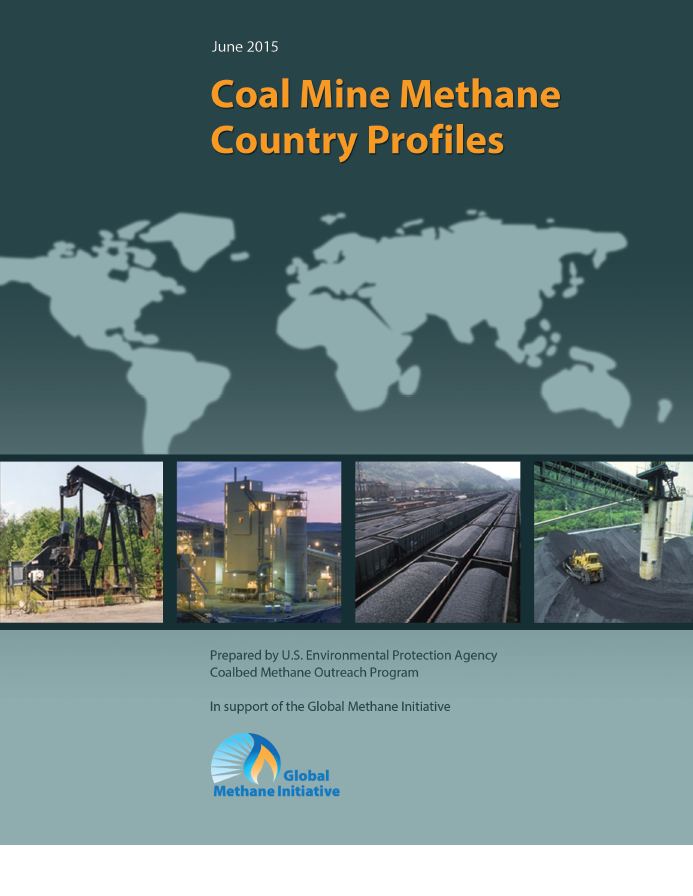
This document contains individual, comprehensive profiles that characterize the coal and coal mine methane sectors of 37 countries—29 Global Methane Initiative partners and an additional eight coal-producing nations. In addition, an Introduction section provides additional methane information, summary tables, and country statistics.
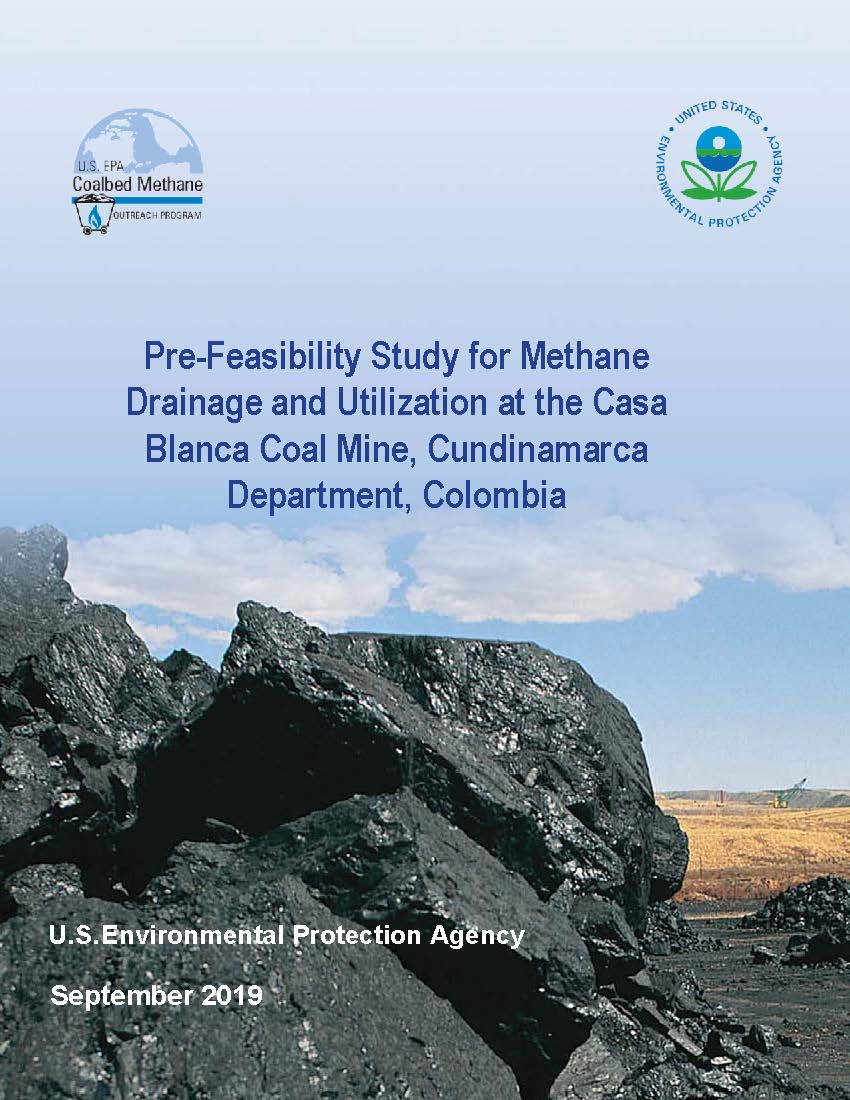
This pre-feasibility study was completed to determine the feasibility of a coal mine methane (CMM) capture and utilization project at the Casa Blanca Coal Mine in Colombia.
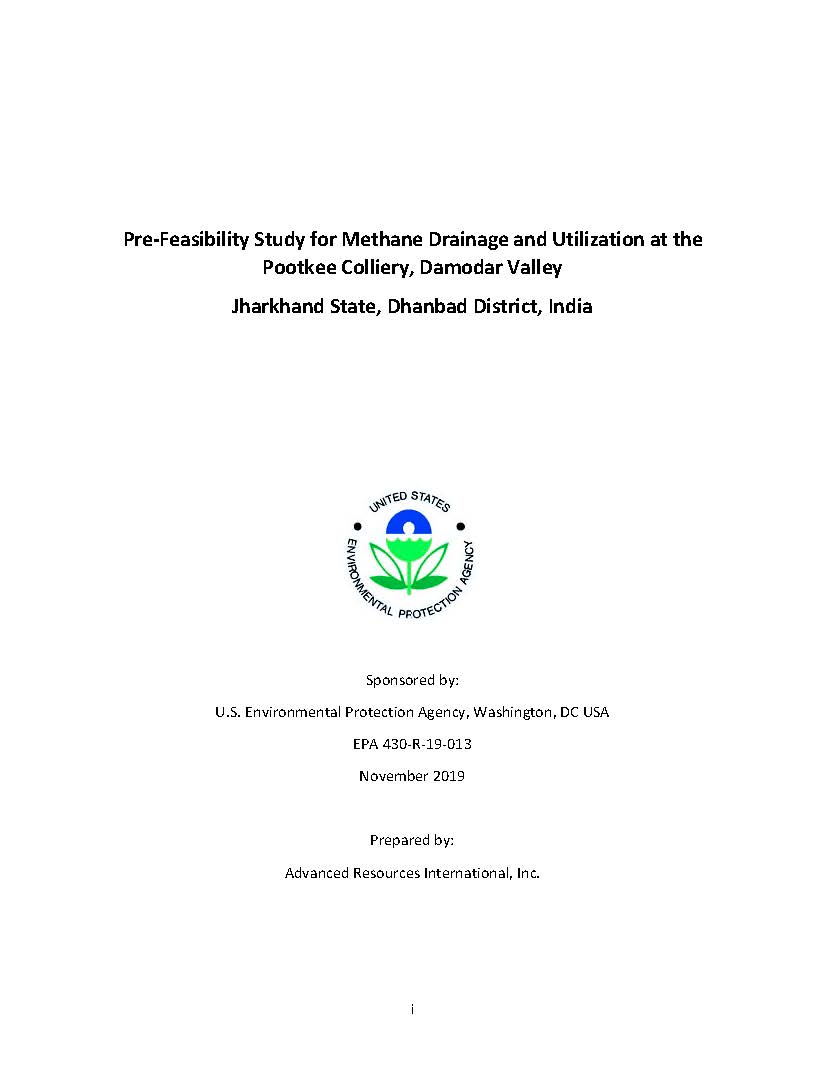
This pre-feasibility study was completed to determine the viability of a CMM drainage project at the Pootkee Colliery. Specifically, the study evaluated the technical and economic viability of utilizing long in-mine horizontal boreholes drilled into Seam XII to drain methane in advance of mining, and to identify end-use options for the drained methane.
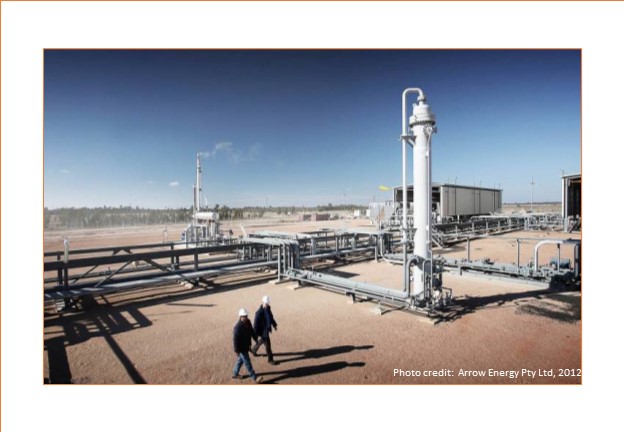
This database provides basic descriptions of several key technologies applicable to coal mine methane recovery and utilization, including each technology’s current status and commercial availability. It is intended to be a living document, which will be periodically updated to remain current. The database is an updated and revised version of the original database compiled by Australia’s Department of Industry, Tourism and Resources, on behalf of the Global Methane Initiative.
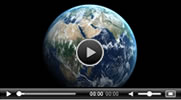
Methane is a prevalent manmade greenhouse gas that traps 28 times more heat than carbon dioxide (CO2). Reducing methane emissions by recovering and using methane as a clean energy source offers many benefits for the environment and local communities. This video highlights the many ways that reducing methane can benefit the environment and local communities.